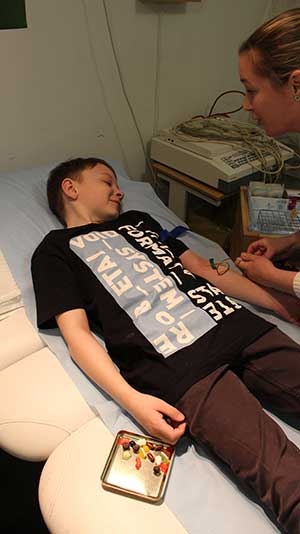![]()
Childhood Risk
Epidemiological Study: Inflammation and metabolic changes in children developmentally exposed to PFAS
Lead: Philippe Grandjean, Lead, University of Rhode Island, College of Pharmacy; Clinical Lead: Pál Weihe, MD, Adjunct Professor at The University of the Faroe Islands and Consultant, Head of the Department of Occupational Medicine and Public Health & Visiting Scientist, Harvard T.H. Chan School of Public Health, Department of Environmental Health
The central hypothesis is that early-life exposure to PFAS leads to immune dysfunction and metabolic abnormalities in children.
 Poly- and perfluoroalkyl substances (PFAS) are widely used industrial chemicals but widespread human PFAS exposures from contaminated sites and bioaccumulation in food-chains were discovered less than 20 years ago, and the full range of adverse health effects is not completely known. Recent evidence suggests that current PFAS exposures may cause adverse effects on the immune system and other sensitive tissues and organs, even at exposures far below provisional exposure limits. Early-life exposure to PFAS may contribute to the development of metabolic diseases, including obesity and type 2 diabetes. PFAS can also decrease antibody response to certain childhood vaccinations, and most PFAS are transferred through breast milk.
Poly- and perfluoroalkyl substances (PFAS) are widely used industrial chemicals but widespread human PFAS exposures from contaminated sites and bioaccumulation in food-chains were discovered less than 20 years ago, and the full range of adverse health effects is not completely known. Recent evidence suggests that current PFAS exposures may cause adverse effects on the immune system and other sensitive tissues and organs, even at exposures far below provisional exposure limits. Early-life exposure to PFAS may contribute to the development of metabolic diseases, including obesity and type 2 diabetes. PFAS can also decrease antibody response to certain childhood vaccinations, and most PFAS are transferred through breast milk.
Relying on an already established birth cohort in the Faroe Islands that has been supported by NIEHS, this project will efficiently utilize exposure and outcome data covering a 9-year span to determine possible links between PFAS exposure profiles, immune dysfunction, and metabolic abnormalities. Due to the homogeneity of the Faroese population, the wide range of exposures, and the high participation rate in the clinical follow-up, this epidemiological setting represents advantages that would be nearly impossible to match anywhere else.
The data analysis will take into account additional factors, including exposures to other environmental chemicals, sex of the child, and diet. Overall, this will allow us to calculate benchmark doses for possible use in risk characterization in U.S. populations exposed to PFAS.


